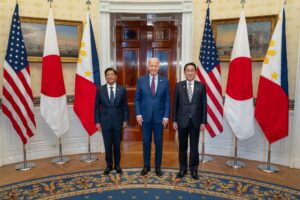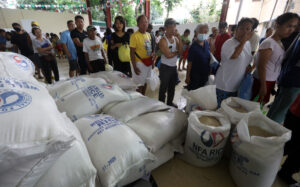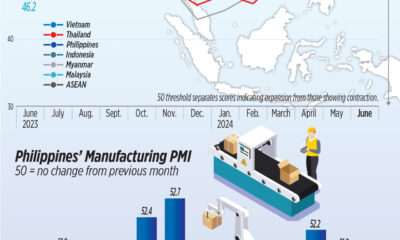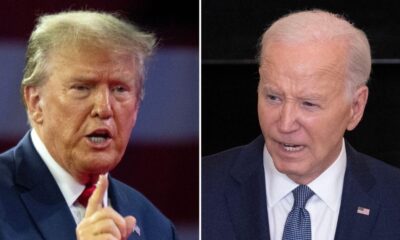Business
The US will set up an economic corridor on the Philippine main island with the help of Japan

The United States will establish an economic corridor on the main island of Luzon – the first of its kind in the Indo-Pacific region – to enable coordinated investments in high-impact projects, with help from Japan.
The corridor under the US Partnership for Global Infrastructure and Investment (PGI), an initiative under the Indo-Pacific Economic Framework, will cover the capital Manila, southern Luzon province of Batangas, Subic Bay and Clark, US President Joseph Biden , connecting to Philippine. President Ferdinand R. Marcos Jr. and Japanese Prime Minister Fumio Kishida said this in a joint statement after their first-ever trilateral summit on April 11.
The economic corridor will focus on high-impact infrastructure projects such as railways and ports, as well as strategic investments in semiconductors, clean energy and supply chains, according to the joint statement.
The three leaders said Tokyo has long supported connectivity in Luzon through the Japan International Cooperation Agency (JICA). “We plan to work with multilateral organizations and the private sector to attract high-quality, transformative investments.”
Mr. Biden, Mr. Marcos Jr. and Mr. Kishida said they plan to hold a trilateral event to promote investments in the proposed Luzon Corridor on the sidelines of the Indo-Pacific Business Forum in Manila in May.
The US will set up a steering committee to speed up work on the proposed Luzon corridor, they said. The US Development Finance Corporation will also open its first regional office in the Philippines as part of the project.
“The Luzon Corridor is a demonstration of our enhanced economic cooperation aimed at delivering tangible investments across multiple sectors,” the three leaders said. “Japan, the Philippines and the US are also working together to expand cooperation and investment in other parts of the Philippines.”
Open RAN
The three leaders said the US and Japan will provide at least $8 million to establish field trials of the Open Radio Access Network (ORAN) and an Asia Open RAN Academy in Manila, building on previous US and Japanese investments of more than $9 million dollars for similar projects.
These projects would enable “future commercial deployment and an open, interoperable, secure, reliable and trusted information and communications technology ecosystem in the Philippines,” they said.
The interoperability-based technology aims to create a global community of mobile network operators and suppliers in the RAN industry.
They said Tokyo is “seriously considering” further investments for the potential commercial deployment of Open RAN technology in the Philippines.
The Philippines wants to test Open RAN in its national broadband program and free Wi-Fi project.
The three allies plan to hold their first-ever trilateral cyber and digital dialogue within a year.
SEMICONDUCTORS
The US and Japan also plan to pursue a new semiconductor workforce development initiative, “which will provide students from the Philippines with a world-class education at leading US and Japanese universities.”
The initiative aims to complement the expansion of semiconductor investments in the Philippines, which would strengthen supply chain resilience among the three countries.
Manila and Washington would coordinate efforts to develop and expand the Philippine semiconductor workforce under the International Technology Security and Innovation Fund of the US CHIPS and Science Act.
The 2022 law provides $52.7 billion in federal subsidies to restore U.S. semiconductor manufacturing and encourage chip makers to move from China back to the U.S. or to other friendly countries.
NUCLEAR ENERGY
According to the joint statement, the three countries also seek to expand their partnership in the field of secure civil-nuclear capacity building.
Washington and Tokyo would help advance the Philippines’ civilian nuclear energy program through a trilateral dialogue this year.
“Under the Foundational Infrastructure for Responsible Use of Small Modular Reactor Technology (FIRST) program, the United States and Japan plan to jointly organize a nuclear energy study tour in Japan for nuclear experts and policymakers from the Philippines and other FIRST partners. countries,” they said.
INVESTMENTS COME
Philippine Ambassador to the U.S. Jose Manuel D. Romualdez said Wednesday that Manila could secure as much as $100 billion in investments over the next five to 10 years if it pursues a three-way partnership with Tokyo and Washington.
The expected investments would cover energy, semiconductors, infrastructure and the digital economy, he said.
Last month, a high-level delegation of US companies led by US Commerce Secretary Gina Raimondo pledged to invest $1 billion in the Philippines, in electric vehicles, digitalization and green energy.
Disputed waters
Mr Marcos has increasingly turned to the US and its regional allies such as Japan and Australia amid deteriorating ties with China, which claims the South China Sea almost in its entirety.
The US and Japan are leading international condemnation of Chinese vessels’ harassment of Philippine vessels deployed on resupply and rotation missions within Manila’s exclusive economic zone.
Mr. Biden reiterated that his country’s defense commitments to Japan and the Philippines are “ironclad.”
“As I said before, any attack on Philippine aircraft, ships or forces in the South China Sea would invoke our mutual defense treaty,” the US president affirmed.
MARCOS x BIDEN
Mr. Marcos and Mr. Biden held a separate meeting, where the two leaders discussed “new initiatives to enhance economic and energy security.”
The two countries also discussed ways to “strengthen maritime cooperation” and “invest in critical infrastructure,” according to a White House readout.
They also reinforced “their shared commitment to promoting democracy, human rights and labor rights.” – Kyle Aristophere T. Atienza











